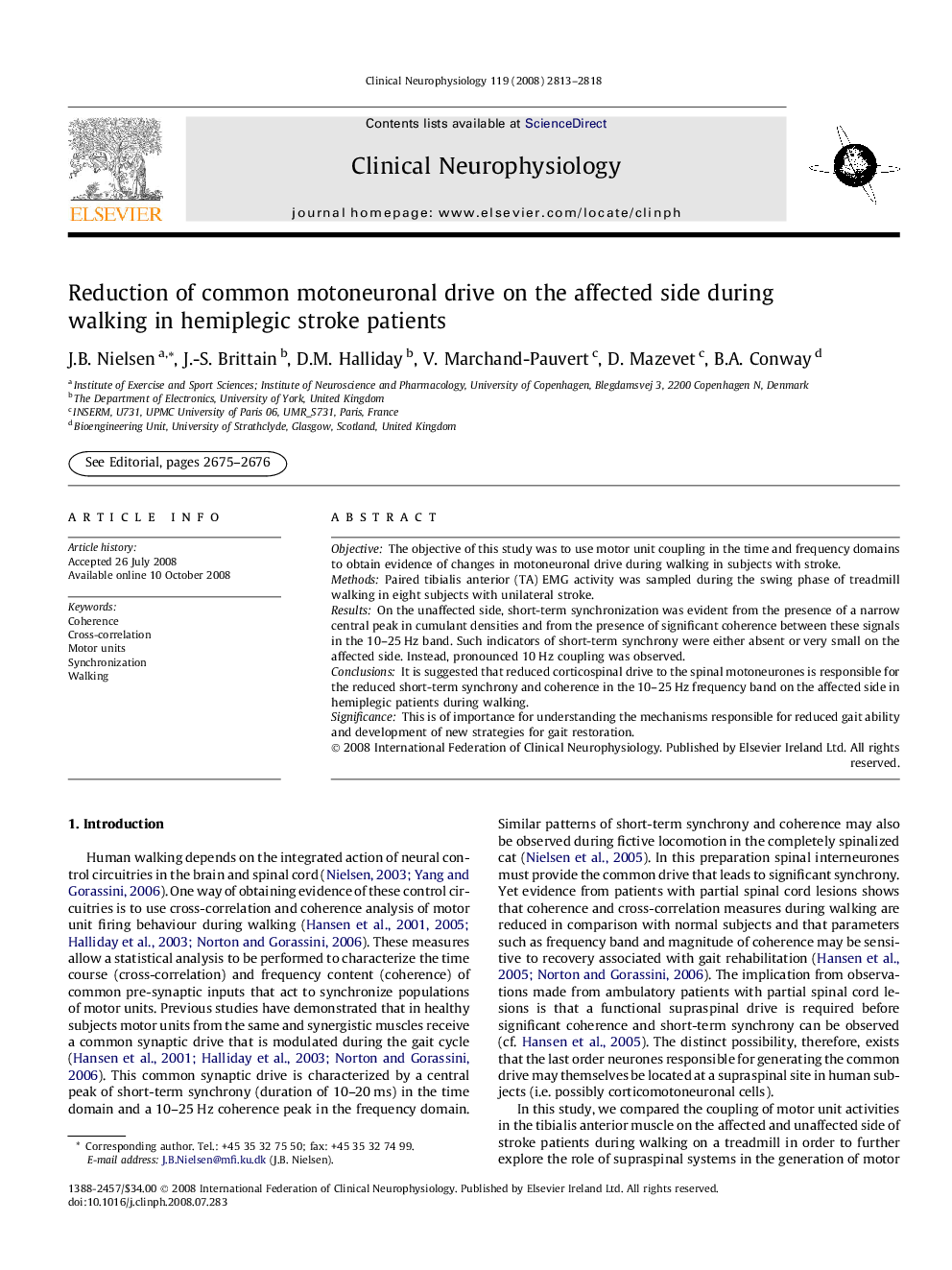| Article ID | Journal | Published Year | Pages | File Type |
|---|---|---|---|---|
| 3047565 | Clinical Neurophysiology | 2008 | 6 Pages |
ObjectiveThe objective of this study was to use motor unit coupling in the time and frequency domains to obtain evidence of changes in motoneuronal drive during walking in subjects with stroke.MethodsPaired tibialis anterior (TA) EMG activity was sampled during the swing phase of treadmill walking in eight subjects with unilateral stroke.ResultsOn the unaffected side, short-term synchronization was evident from the presence of a narrow central peak in cumulant densities and from the presence of significant coherence between these signals in the 10–25 Hz band. Such indicators of short-term synchrony were either absent or very small on the affected side. Instead, pronounced 10 Hz coupling was observed.ConclusionsIt is suggested that reduced corticospinal drive to the spinal motoneurones is responsible for the reduced short-term synchrony and coherence in the 10–25 Hz frequency band on the affected side in hemiplegic patients during walking.SignificanceThis is of importance for understanding the mechanisms responsible for reduced gait ability and development of new strategies for gait restoration.
